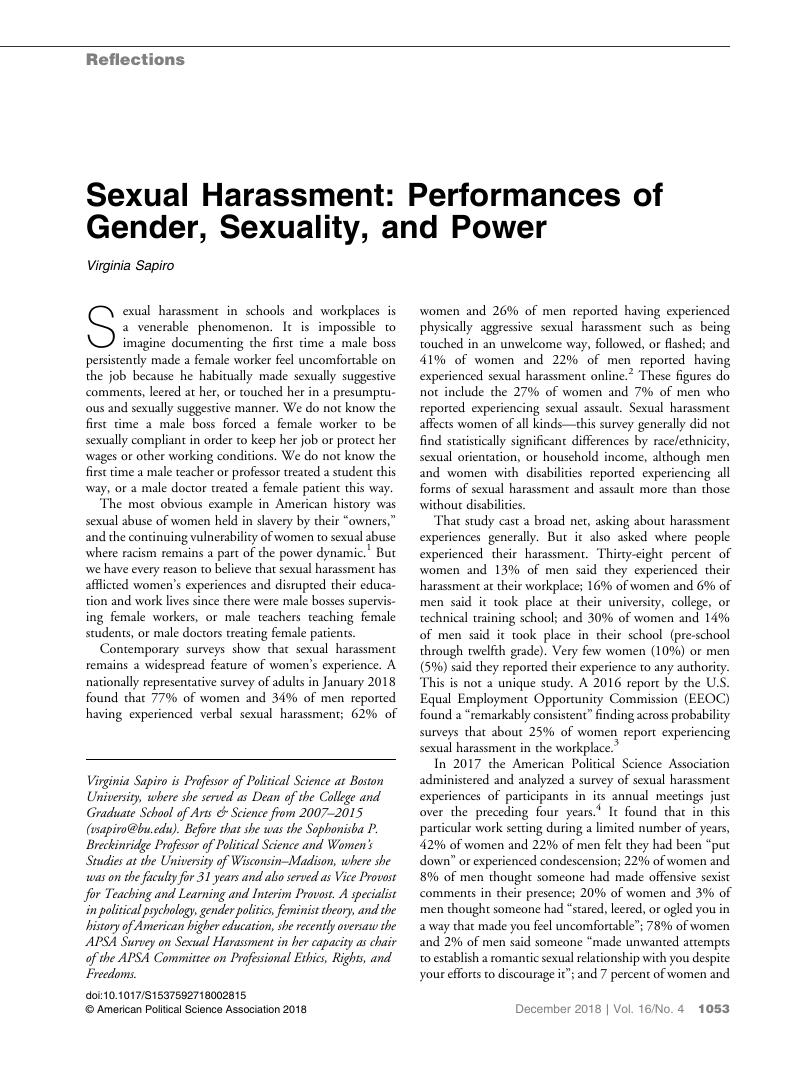Crossref Citations
This article has been cited by the following publications. This list is generated based on data provided by Crossref.
Sapiro, Virginia
2020.
Gender, Considered.
p.
239.
RABIEH, LINDA R.
2020.
Gender, Education, and Enlightened Politics in Plato’sLaws.
American Political Science Review,
Vol. 114,
Issue. 3,
p.
911.
Hunt, Valerie H.
Rucker, Larra
and
Kerr, Brinck
2020.
Reconsidering Sex-Based Occupational Segregation and Agency Missions: An Analysis of U.S. State Bureaucracies (1987-2015) Using Two Different Thresholds.
Administration & Society,
Vol. 52,
Issue. 3,
p.
431.
Zippel, Kathrin
2021.
Gender, Power and Higher Education in a Globalised World.
p.
139.
Leopold, Joy
Lambert, Jason R.
Ogunyomi, Ifeyimika O.
and
Bell, Myrtle P.
2021.
The hashtag heard round the world: how #MeToo did what laws did not.
Equality, Diversity and Inclusion: An International Journal,
Vol. 40,
Issue. 4,
p.
461.
Mennicke, Annelise
Kulkarni, Shanti
Ross, Ticola
Ferrante-Fusilli, Frances
Valencia, Maxine
Meehan, Erin
and
Crocker, Tianca
2022.
Field Note—Responding to the #MeToo Era in Social Work: A Policy for Sexual Harassment in Field.
Journal of Social Work Education,
Vol. 58,
Issue. 4,
p.
817.
Sapiro, Virginia
2022.
Developments in American Politics 9.
p.
49.
Sapiro, Virginia
2024.
Integrating Ethics, Methods, and the Dynamics of Power in Political Science Fieldwork.
PS: Political Science & Politics,
Vol. 57,
Issue. 2,
p.
310.
Goruk, Kayla J.
Blais, Julie
and
McArthur, Jennifer L.
2024.
Identifying Risk Factors of Gender-Based Harassment.
Victims & Offenders,
p.
1.
Kissi, Ernest
Mireku, Evans Kwesi
Labaran, Musah
and
Simons, Barbara
2024.
Sexual harassment and employee performance in the construction industry: the mediating role of psychological distress and employee engagement.
Engineering, Construction and Architectural Management,
Liu, Ying
and
Riccucci, Norma M.
2025.
Women’s Representation and Federal Employees’ Sexual Harassment Experience.
Review of Public Personnel Administration,



